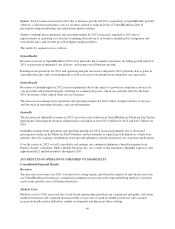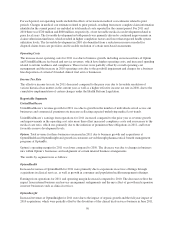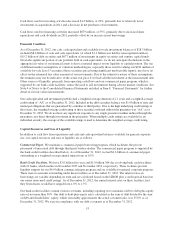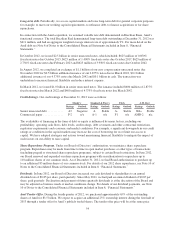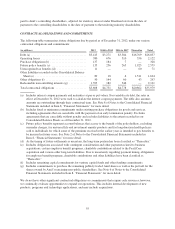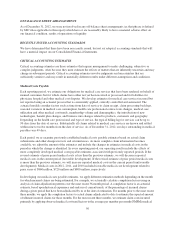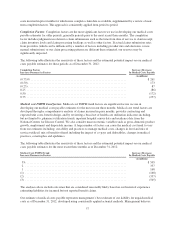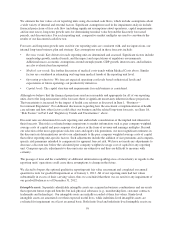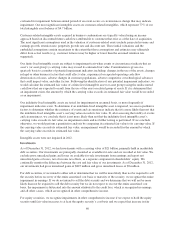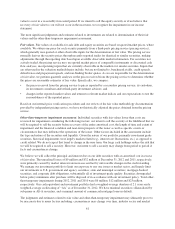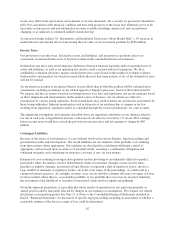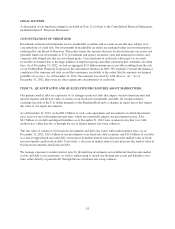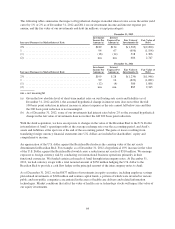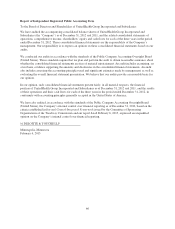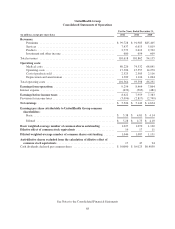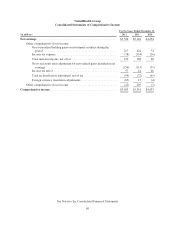United Healthcare 2012 Annual Report Download - page 61
Download and view the complete annual report
Please find page 61 of the 2012 United Healthcare annual report below. You can navigate through the pages in the report by either clicking on the pages listed below, or by using the keyword search tool below to find specific information within the annual report.We estimate the fair values of our reporting units using discounted cash flows, which include assumptions about
a wide variety of internal and external factors. Significant assumptions used in the impairment analysis include
financial projections of free cash flow (including significant assumptions about operations, capital requirements
and income taxes), long-term growth rates for determining terminal value beyond the discretely forecasted
periods, and discount rates. For each reporting unit, comparative market multiples are used to corroborate the
results of our discounted cash flow test.
Forecasts and long-term growth rates used for our reporting units are consistent with, and use inputs from, our
internal long-term business plan and strategy. Key assumptions used in these forecasts include:
•Revenue trends. Key drivers for each reporting unit are determined and assessed. Significant factors include:
membership growth, medical trends, and the impact and expectations of regulatory environments.
Additional macro-economic assumptions around unemployment, GDP growth, interest rates, and inflation
are also evaluated and incorporated.
•Medical cost trends. See further discussion of medical costs trends within Medical Costs above. Similar
factors are considered in estimating our long-term medical trends at the reporting unit level.
•Operating productivity. We forecast expected operating cost levels based on historical levels and
expectations of future operating cost productivity initiatives.
•Capital levels. The capital structure and requirements for each business is considered.
Although we believe that the financial projections used are reasonable and appropriate for all of our reporting
units, due to the long-term nature of the forecasts there is significant uncertainty inherent in those projections.
That uncertainty is increased by the impact of health care reforms as discussed in Item 1, “Business—
Government Regulation”. For additional discussions regarding how the enactment or implementation of health
care reforms and how other factors could affect our business and the related long-term forecasts, see Item 1A,
“Risk Factors” in Part I and “Regulatory Trends and Uncertainties” above.
Discount rates are determined for each reporting unit and include consideration of the implied risk inherent in
their forecasts. This risk is evaluated using comparisons to market information such as peer company weighted
average costs of capital and peer company stock prices in the form of revenue and earnings multiples. Beyond
our selection of the most appropriate risk-free rates and equity risk premiums, our most significant estimates in
the discount rate determinations involve our adjustments to the peer company weighted average costs of capital
that reflect reporting unit-specific factors. Such adjustments include the addition of size premiums and company-
specific risk premiums intended to compensate for apparent forecast risk. We have not made any adjustments to
decrease a discount rate below the calculated peer company weighted average cost of capital for any reporting
unit. Company-specific adjustments to discount rates are subjective and thus are difficult to measure with
certainty.
The passage of time and the availability of additional information regarding areas of uncertainty in regards to the
reporting units’ operations could cause these assumptions to change in the future.
We elected to bypass the optional qualitative reporting unit fair value assessment and completed our annual
quantitative tests for goodwill impairment as of January 1, 2013. All of our reporting units had fair values
substantially in excess of their carrying values, thus we concluded that there was no need for any impairment of
our goodwill balances as of December 31, 2012.
Intangible assets. Separately-identifiable intangible assets are acquired in business combinations and are assets
that represent future expected benefits but lack physical substance (e.g., membership lists, customer contracts,
trademarks and technology). Our intangible assets are initially recorded at their fair values. Finite-lived
intangible assets are amortized over their expected useful lives, while indefinite-lived intangible assets are
evaluated for impairment on at least an annual basis. Both finite-lived and indefinite-lived intangible assets are
59


